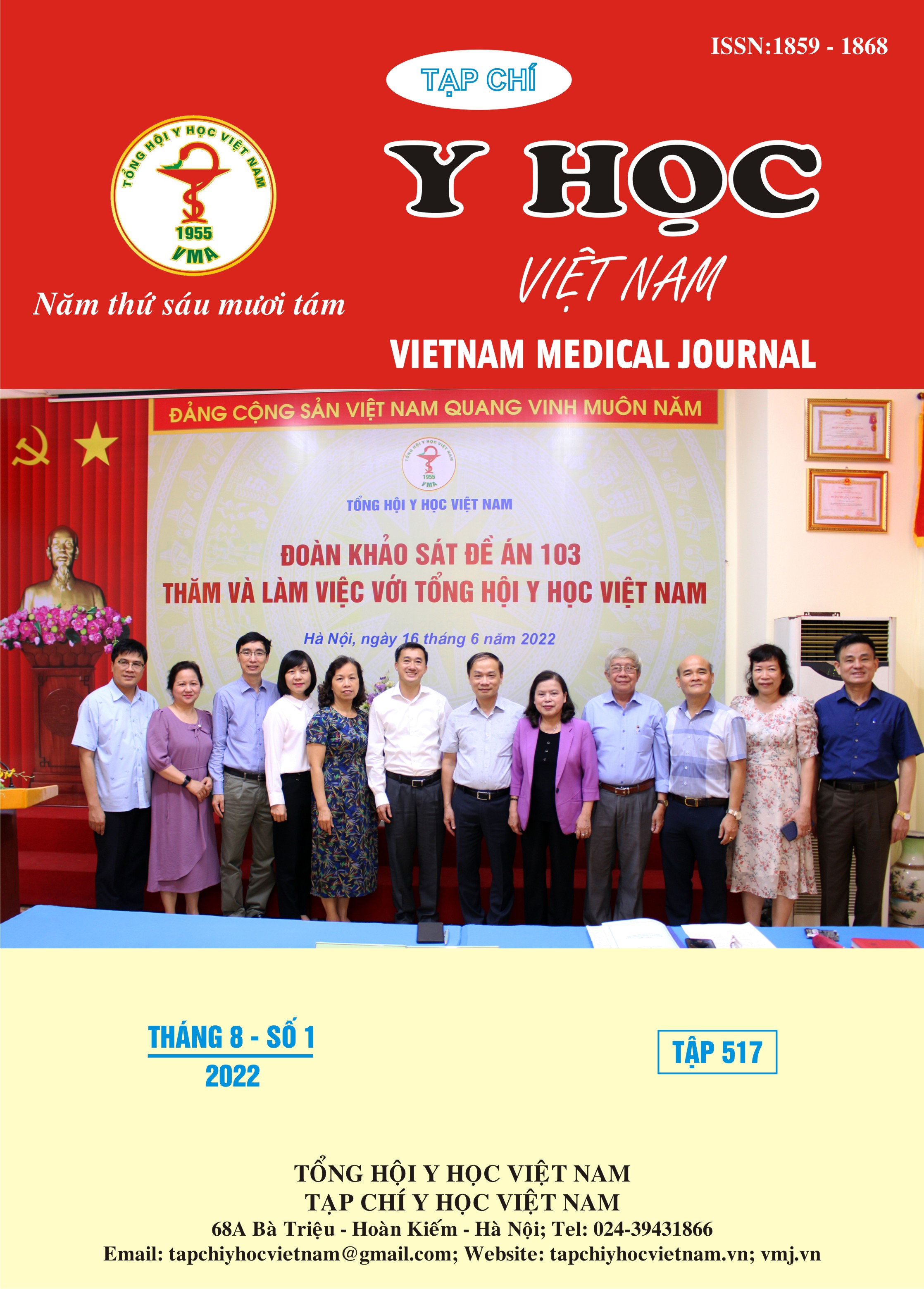SINGLE BLASTOCYST TRANSFER: AN EFFECTIVE SOLUTION TO MINIMIZE THE RISK OF MULTIPLE PREGNANCY IN WOMEN UNDER 35
Main Article Content
Abstract
Objective: Comparison of pregnancy outcomes and multiple pregnancy rates between single blastocyst transfer and double blastocyst transfer in frozen embryo transfer cycle of patients under 35 years of age. Methods: Patients with frozen blastocyst transfer under 35 years of age and with good quality embryos were divided into 2 groups, group 1 (study group) included 78 patients with 1 blastocyst transfer, group 2 (control group) included 85 patients with 2 blastocysts transfer. Evaluation of pregnancy rate, embryo implantation rate, ongoing pregnancy rate, live birth rate, miscarriage rate, preterm birth rate and multiple pregnancy rate of 2 groups. Results: There were no statistically significant differences between pregnancy rate (56,41% vs 56,47%; p = 0,99), clinical pregnancy rate (51,2% vs 52,9%; p = 0,83), ongoing pregnancy rate (44,8% vs 44,7%; p = 0,98) and live birth rate (44.8% vs 44,7%; p = 0,98) between the 2 groups. However, the group that transferred 2 blastocysts had a higher multiple pregnancy rate and premature birth rate than the group that transferred 1 blastocyst (31% vs 2,5%; p = 0,001 and 31,5% vs 2,8%; p = 0,001). Conclusion: The transfer of single good quality frozen blastocyst in patients under 35 years of age reduces the multiple pregnancy rate, while ensuring the same clinical and ongoing pregnancy and live birth rates as compared with double blastocyst transfer.
Article Details
Keywords
Single blastocyst transfer, frozen embryo transfer
References
2. Aila Tiitinen. Single embryo transfer: Why and how to identify the embryo with the best developmental potential, Best Practice & Research Clinical Endocrinology & Metabolism 33 (2019) 77 – 88.
3. European IVF-Monitoring Consortium (EIM), European Society of Human Reproduction and Embryology (ESHRE), Kupka MS, D'Hooghe T, Ferraretti AP, de Mouzon J, et al. Assisted reproductive technology in Europe, 2011: results generated from European registers by ESHRE. Hum Reprod 2016; 31:233–48.
4. Alpha Scientists in Reproductive Medicine and ESHRE Special Interest Group of Embryo. The Istabul consensus workshop on embryo assessment proceedings of an expert meeting. Human Reproduction. 2011; 26 (6): 1270-1283.
5. Glujovsky D, Blake D, Farquhar C, Bardach A. Cleavage stage versus blastocyst stage embryo transfer in assisted reproductive technology. Cochrane Database Syst Rev. 2012;7,CD002118.
6. Papanikolaou EG, Camus M, Kolibianakis EM, Van Landuyt L, Van Steirteghem A, Devroey P. In vitro fertilization with single blastocyst-stage versus single cleavage-stage embryos. N Engl J Med. 2006; 354 (11):1139–46.
7. Santos MA, Kuijk EW, Macklon NS. The impact of ovarian stimulation for IVF on the developing embryo. Reproduction. 2010;139(1):23–34.
8. Franasiak J, Forman E, Hong K, Werner M, Upham K, Treff N, Scott R. The nature of aneuploidy with increasing age of the female partner: a review of 15,169 consecutive trophectoderm biopsies evaluated with comprehensive chromosomal screening. Fertil Steril. 2014; 101 (3): 656-663.
9. Li N, Guan Y, Ren B, Zhang Y, Du Y, Kong H, Zhang Y and Lou H. Effect of Blastocyst Morphology and Developmental Rate on Euploidy and Live Birth Rates in Preimplantation Genetic Testing for Aneuploidy Cycles With Single-Embryo Transfer. Reproduction, a section of the journal Frontiers in Endocrinology. April 2022 , Volume 13:1 - 9.


